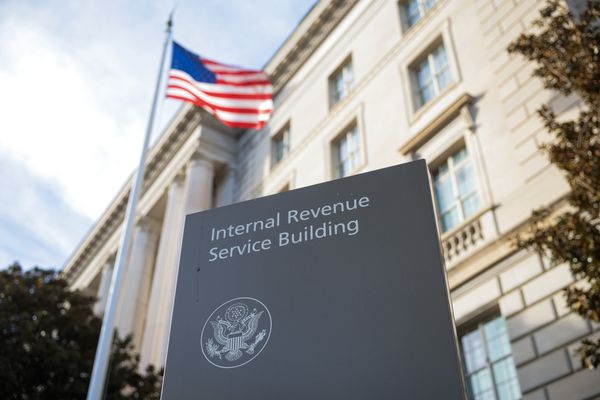On Feb. 25, James Harden made a brilliant first impression for the third time in his career, finishing with 27 points, 12 assists, eight rebounds and a season-best +35 in his debut with the Sixers–a 133–102 blowout against the Timberwolves.
One moment in particular really stood out. Early in the second quarter, Harden waited on the right wing with his hands by his side, looking on as Tobias Harris attempted to save a broken play on the opposite side of the floor.
Normally the one who dictates how his team’s possessions end, Harden does not often find himself in situations like this. And when he does, his feet typically don’t budge until it’s time to trot back on defense. But here, on his best behavior, motivated and caring, Harden sprung into motion.
As Harris made his move, Harden scampered toward the corner, a baseline drift that would be described as unremarkable for 99.9% of the NBA’s guards but semishocking when done by someone who hasn’t done this for most of his career, including the last two seasons. (I watched every Harden three since he left Houston and zero were like that one.)
By the time Harris went airborne beneath the basket, Harden was wide open in the opposite corner. He caught the pass in his shooting pocket with 2.1 seconds on the shot clock, rose and fired while fading out of bounds. Swish.
This sequence isn’t significant for auguring Harden’s sudden desire to become Duncan Robinson. Instead, it was a reminder of how invested the three-time scoring champ can be when everything goes exactly how he wants it to. Few understand this more clearly than Sixers president Daryl Morey, who knew the version of Harden he’d be acquiring from the Nets—in exchange for Ben Simmons, Seth Curry, Andre Drummond and a pair of first-round picks—would be invigorated by a situation that could make him happy.
How long that lasts is another question that will inevitably be revisited, but so far Harden has decided to look like a streamlined version of his perennial MVP candidate self, still undefeated in a Sixers uniform.
Heading into tonight’s matchup against his former team, Harden is averaging 24.6 points, 12.4 assists and 7.6 rebounds over the last month—impressive numbers that don’t begin to describe the night-and-day difference between how Harden looked before and after the trade deadline. In Brooklyn he shifted between dynamic, languid and dyspeptic, far less efficient than what we’ve grown accustomed to.
There were several ways to explain his decline—his tender hamstring, a league-wide crackdown on foul hunters and a surprisingly makeshift supporting cast (Kevin Durant’s knee injury, Joe Harris’s ankle surgery and Kyrie Irving’s decision not to get vaccinated forced Harden to operate in lineups that couldn’t space the floor) are a start—but the results were still worrisome.
His signature stepback was closer to a white flag than something opponents should fear. He shot a career-low 54% at the rim. His turnover rate ballooned to a career-high 19.8%. His true shooting percentage slipped to 57.6, a mark unseen since he was a rookie.
All of that has flipped in Philadelphia, where once again he’s an unstoppable pick-and-roll playmaker who is unguardable one-on-one and can seemingly get to the restricted area whenever he wants. Keep in mind we’re dealing with a five-game sample size, but Harden’s PER is exactly 10 points higher with the Sixers than it was with the Nets. His true shooting is 72.6. His assist rate (53.7%) has never been higher. A whopping 49% of his shots are coming at the rim, and he’s making 69% of them.
When he doesn’t directly score around the basket, Harden’s drives either result in a lob or pocket pass to Joel Embiid—where total destruction is immediate—or yield a ticket to the free throw line. He’s drawing a shooting foul on 28.4% of his attempts (up from 18.8% in Brooklyn; his career best is 21.7%, back in 2013).
Harden hasn’t been isolating as often—from a league-leading 7.6 possessions per game in Brooklyn down to 5.0—but when he does it’s effortless, bearing a 71.1 effective field goal percentage while he draws a foul 36% of the time.
Last week, Harden toyed with Evan Mobley, a 20-year-old defensive phenom seemingly built to keep guys like Harden at bay. He kept the rookie off balance and kept getting wherever he wanted. It was … astonishing:
(Here’s how that individual battle looked in January:
But as wonderful as he’s looked on his own, Harden’s immediate synergy with Embiid is an even more significant reason to feel bullish about this team. Their offensive rating is *adjusts glasses* 133.0 together, with Embiid still sporting a league-high usage rate. (The Sixers spent a majority of this season playing their starting five more often than any team except the Nuggets, but have staggered Harden and Embiid.)
Already the most overwhelming pick-and-roll combination in the league, it took zero time for Doc Rivers to put his two Hall of Famers in spots where they could pose a threat at the exact same time.
This dribble handoff is already a staple that they run at least a dozen times every game. It starts with Harden coming off a screen near the sideline before he receives the ball from Embiid in the middle of the floor, allowing him to slingshot downhill as Philly’s 7'1" center dashes to the basket. It’s impossible to slow this down without help squeezing in from the weakside, but—as seen in the clip above—timing those rotations is easier said than done.
Harden and Embiid have faced only four teams so far, though there are still hints at what some opposing coaches will try. Tom Thibodeau is allergic to zone defense, but the Cavs and Timberwolves used it quite a bit. Expect a lot more of this going forward.
From there, how Philadelphia’s role players orbit Harden and Embiid’s two-man game may ultimately decide how far they go in the playoffs. The paint will be packed in a seven-game series, whether it’s against Boston’s switch-everything scheme, Miami’s 2–3 zone, Cleveland’s 3–2 zone or any other traditional coverage they come up against.
This doesn’t seem like it’ll be much of a concern for Tyrese Maxey. Philly’s third-most important player has found ways to thrive alongside his two superstar teammates in a new off-ball role, attacking closeouts, spotting up for three, going hog wild in transition. (His point totals in games where Harden played: 28, 21, 25, 33, 17.)
There will be nights when Harris, Danny Green, Furkan Korkmaz, Isaiah Joe and Georges Niang make the defense pay (don’t sleep on The Minivan’s savvy show-and-go: he’ll run you over), but forcing them to do so will always be preferred when weighed against Harden or Embiid inflicting the pain directly—especially when playoff-intense closeouts and help rotations are factored in to vaporize some of those open looks.
Matisse Thybulle, a sub-30% three-point shooter over the past two seasons, is in his own category. His back-cuts are necessary and beneficial, but he’ll be ignored in the postseason in ways that won’t allow Philly’s offense to hum like it otherwise could. Just watch Evan Fournier on this play:
Rivers is already trying new ways to navigate a tricky situation. On Monday night against the Bulls, Thybulle was a small-small screener over and over again, either to force a switch and let Harden cook a favorable matchup or slip into the paint and make a play. The task is unfamiliar to Thybulle, but he sees the floor well enough to make it viable here and there; the Sixers should do whatever they can to keep his elite defense on the court while masking his inability to space the floor—especially when there’s already a nonshooter such as DeAndre Jordan also out there.
This set was especially intriguing: Harden “Iverson-cutting” into a side pick-and-roll that results in a wide-open Maxey three.
Harris isn’t nearly the same defender or quick-twitch decision-maker as Thybulle and he’s stumbled through most of this season trying to rediscover the player just one year removed from being fairly labeled an All-Star snub. He’s had a rough go finding any rhythm on a team that no longer needs (or wants) him to average 15 shots.
But beyond standing on the perimeter and reacting to a Harden kickout or swing-swing off an Embiid post-up, the Sixers have tried to integrate Harris within the flow of their new offense in some shrewd ways. Here’s one example, a pindown for Harris that’s disguised as a Harden-Embiid pick-and-roll.
Harris misses the shot because he took off too early, but misdirections like this are worth keeping an eye on. There’s also a very real future in which Harris loses crunch-time playoff minutes to Niang, Thybulle or any number of players who better accentuate Harden, Embiid and Maxey.
On that note, most analysis before and immediately after The Harden Trade Vol. 3 focused on the present. And that’s fair: Embiid isn’t made of glass but he also isn’t concrete. Maximizing his prime is everything. At the same time, if the Sixers spend the summer building a supporting cast that better accentuates both stars and whatever style they eventually settle into, this team should be even closer to the title next year.
When viewed through that lens, with an understanding that Harden currently carries a ton of offensive responsibility (while remaining an incredibly weak defender) on a team that doesn’t have enough ballhandlers (there may be way too much Shake Milton in the playoffs) and could struggle to space the floor throughout the playoffs, this doesn’t have to be seen as a championship-or-bust gambit. There’s pressure, sure. But if Harden sustains what he’s been over the past few games for at least another 16 months, he and Morey are a decent bet to succeed where they could not in Houston.







